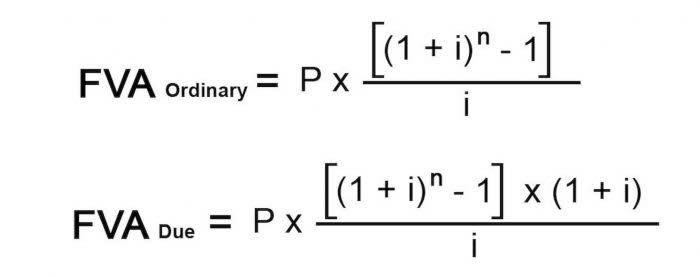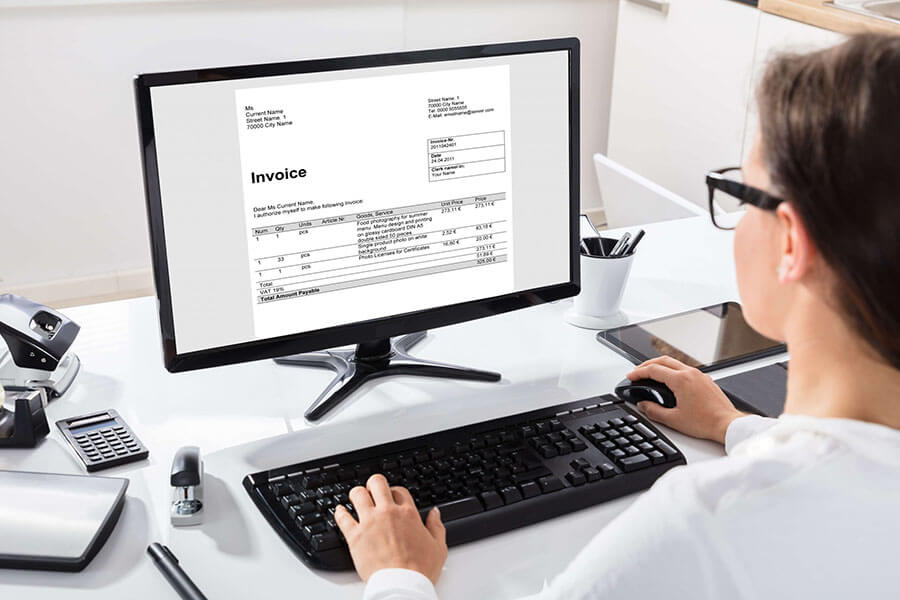
All liquid assets are recorded on the balance sheet at their current market values. This means that over time, improvements in market value can be monitored and assessed. Any highly liquid assets you purchase should be recorded at fair market value rather than historical cost. Financial investments that your business makes should also be recorded at fair market value and adjusted after each accounting period to reflect the most current value.

Jim started his business in 2008, constructing a building to house his growing staff. The cost to construct the building was $300,000, but by 2020, the fair market value of the building had increased to $1.1 million. However, on Jim’s balance sheet, the cost of the building remains at $300,000. The other exception is accounts receivable, which should be displayed on your balance sheet at their net realizable balance, which is the balance that you expect to receive when the accounts receivable balances are paid.
Factors In Determining Allowability
The overall objective is to provide that, to the extent practicable, all organizations of similar types doing similar work will follow the same cost principles and procedures. To achieve this uniformity, individual deviations concerning cost principles require advance approval of the agency head or designee. Class deviations for the civilian agencies require advance approval of the Civilian Agency Acquisition Council. Class deviations for the National Aeronautics and Space Administration require advance approval of the Deputy Chief Acquisition Officer. Class deviations for the Department of Defense require advance approval of the Principal Director, Defense Pricing and Contracting, Office of the Under Secretary of Defense for Acquisition and Sustainment. Funded pension cost means the portion of pension cost for a current or prior cost accounting period that has been paid to a funding agency.
For example, marketable securities are recorded at their fair market value on the balance sheet, and impaired intangible assets are written down from historical cost to their fair market value. A historical cost is a measure of value used in accounting in which the value of an asset on the balance sheet is recorded at its original cost when acquired by the company. The historical cost method is used for fixed assets in the United States under generally accepted accounting principles . The cost principle states that any asset should be recorded at the purchase price. Learn why the cost principle is an important principle for your small business. There are four basic financial reporting principles governed by generally accepted accounting principles .
Book Value Of An Asset And Historical Cost
Losses from operating food and dormitory services are allowable only if the contractor’s objective is to operate such services on a break-even basis. Contractor’s headquarters means the highest organizational level from which executive compensation costs are allocated to Government contracts.

Going back to our trade-in example, the company that traded in their car might have gotten a good deal on the new car. Instead of paying the full retail price of $30,000, it only had to pay $23,000. Even though the car is technically worth $30,000, the company records the cost on thebalance sheetof $23,000 because that this is the amount that was actually paid for the car.
Frequently Asked Questions About The Cost Principle
Equator Principles means the standards entitled “A financial industry benchmark for determining, assessing and managing environmental and social risk in projects” dated June 2013 and adopted by certain financial institutions, as the same may be amended or supplemented from time to time. Impairment of both tangible and intangible assets is recorded as a separate expense on the income sheet and is neither amortized nor depreciated. The printers were recorded individually, which meant six cost principle entries for $2,500 each. Rather than changing the cost principle, the business may credit this difference to an equity account. The first example we give will consider the original cost of an asset and its appreciation over a period of time. One disadvantage the cost principle has is that it does not always provide the most accurate information on the overall financial status of a business.
As an illustration of how the https://www.bookstime.com/ works, consider a small manufacturer that purchased a packing machine for $100,000 in 2018. The asset is added to the company’s balance sheet with a value of $100,000. The cost principle is one of the most conservative ways to track the values of multiple large assets, but there are some notable cases where cost accounting should not be used. With this principle, there is hardly a time you will need to make any adjustments. When using the cost principle, there are minimum chances that the cost will change. Your financial statements will maintain accuracy and not depend on fluctuating fair values.
This might be quarterly, semi-annually, or annually, depending on the period for which you want to create the financial statements to be presented to investors so that they can track and compare the company’s overall performance. Historical CostThe historical cost of an asset refers to the price at which it was first purchased or acquired. Fixed AssetFixed assets are assets that are held for the long term and are not expected to be converted into cash in a short period of time. Plant and machinery, land and buildings, furniture, computers, copyright, and vehicles are all examples. Accountants Use DepreciationDepreciation is a systematic allocation method used to account for the costs of any physical or tangible asset throughout its useful life. Depreciation enables companies to generate revenue from their assets while only charging a fraction of the cost of the asset in use each year. It makes asset values objective, and it is easier to report on than other methods.
Using The Cost Principle Saves Money
The cost of the office building is still listed as $250,000 on the balance sheet. Because asset values change constantly, using the cost principle can lack accuracy. When you don’t take those fluctuations into account, a business’s financial position is difficult to assess. A business using the cost principle may have far less worth thanks to depreciated machinery. It may be worth far more, too, if assets have risen in value significantly. If it is worth less than the value on the books, then the goodwill is considered to be impaired. If it has risen in value, then no changes are made to the historical cost.
This is because, in many cases, the cost of an item is subjective and dependent on market conditions. For example, an asset you purchased a year ago may suddenly gain value for a variety of reasons. Maybe the manufacturer stopped making that particular item, or the item has become scarce.
- For example, in the context of inflation, the cost concept of accounting would lead to an overstatement of net profit.
- They can also see how the values of their assets are changing over time, which helps them make decisions about whether to buy equipment new or secondhand based on how the value of that equipment is likely to change in the future.
- This subpart provides the principles for determining allowable cost of contracts and subcontracts with State, local, and federally recognized Indian tribal governments.
- For contracts other than those subject to paragraph of this section, the base period for allocating indirect costs shall be the contractor’s fiscal year used for financial reporting purposes in accordance with generally accepted accounting principles.
- Alicia Tuovila is a certified public accountant with 7+ years of experience in financial accounting, with expertise in budget preparation, month and year-end closing, financial statement preparation and review, and financial analysis.
- The original cost can include everything that goes into the cost, including shipping and delivery fees, setup, and training.
Book value is calculated by subtracting depreciation or amortization from the original cost of that asset. The primary advantage of historical cost is that it curbs any tendency for the business to overvalue an asset. As an added reality check, while appreciation is ignored in historical cost, amortization and depreciation of an asset is not. It’s the price paid for the asset, which doesn’t change even if the asset appreciates. This means that although an asset’s market value may decline over time, this might not be reflected in the cost principle. Another problem with the cost principle is it does not take into account the depreciation on an asset.
Overview: What Is The Cost Principle?
PRB covers all benefits, other than cash benefits and life insurance benefits paid by pension plans, provided to employees, their beneficiaries, and covered dependents during the period following the employees’ retirement. Benefits encompassed include, but are not limited to, postretirement health care; life insurance provided outside a pension plan; and other welfare benefits such as tuition assistance, day care, legal services, and housing subsidies provided after retirement. This subpart describes the applicability of the cost principles and procedures in succeeding subparts of this part to various types of contracts and subcontracts. A cost is allocable to a specific grant, function, department, or other component, known as a cost objective, if the goods or services involved are chargeable or assignable to that cost objective in accordance with the relative benefits received or other equitable relationship.
- Market value accounting allows a business to make corrections to the value of certain types of assets by estimating the value of these assets based on what they think the price is at the current time.
- Further suppose that the price of the land increases (e.g., twice the original cost in two years).
- The cost of changes in pension plans are not allowable if the changes are discriminatory to the Government or are not intended to be applied consistently for all employees under similar circumstances in the future.
- Use Straight-line DepreciationStraight Line Depreciation Method is one of the most popular methods of depreciation where the asset uniformly depreciates over its useful life and the cost of the asset is evenly spread over its useful and functional life.
- When partial exemption from a tax is attributable to Government contract activity, taxes charged to such work in excess of that amount resulting from application of the preferential treatment are unallowable.
- Despite its limitations, the cost concept of accounting is regarded as the best option when compared to the available alternatives.
Historical cost is in line with conservative accounting, as it prevents overstating the value of an asset. Peggy James is a CPA with over 9 years of experience in accounting and finance, including corporate, nonprofit, and personal finance environments. She most recently worked at Duke University and is the owner of Peggy James, CPA, PLLC, serving small businesses, nonprofits, solopreneurs, freelancers, and individuals. If a company wants to sell its asset at that time of selling, there can be some confusion arising because the market value of that asset at which the company wants to sell will be quite different from the book value of the asset. Use Straight-line DepreciationStraight Line Depreciation Method is one of the most popular methods of depreciation where the asset uniformly depreciates over its useful life and the cost of the asset is evenly spread over its useful and functional life. When valuing assets, the accountant must assume that the business is going to continue to operate. Below are some of the most commonly asked questions regarding the cost principle.
Americans: Plan Ahead This Tax Season With These New Changes
The cost principle is an accounting principle that requires assets, liabilities, and equity investments to be recorded on financial records at their original cost. However, the Cost Accounting Concept does not reflect the real value of assets or liabilities in the current market. By using this concept, the users will get confusing especially when the market value of assets or liabilities is significantly different from the original costs. Any taxes, interest, or penalties that were allowed as contract costs and are refunded to the contractor shall be credited or paid to the Government in the manner it directs. If a contractor or subcontractor obtains a foreign tax credit that reduces its U.S.

The cost of $25,000 is still recorded on the balance sheet, and the depreciation of $20,000 appears as ($20,000) on the statement. A music company purchases the copyright to a movie from an independent filmmaker. The newly purchased asset should be recorded at the cost of the purchase itself. However, because the copyright is an intangible asset, it is not recorded on the balance sheet whatsoever. The purpose of the Cost Principle is to ensure that financial statements record the original cost of a valuable asset.
Whether increased flexibility in scheduling results in time savings and more effective use of personnel that would outweigh additional travel costs. Appropriate downward adjustments from the maximum per diem rates would normally be required under these circumstances. While these adjustments need not be calculated in accordance with the Federal Travel Regulation or Joint Travel Regulations, they must result in a reasonable charge. Paragraphs and of this section do not incorporate the regulations cited in paragraphs , , and of this section in their entirety. Only the maximum per diem rates, the definitions of lodging, meals, and incidental expenses, and the regulatory coverage dealing with special or unusual situations are incorporated herein. Grants to educational or training institutions, including the donation of facilities or other properties, scholarships, and fellowships are considered contributions and are unallowable.
Historical Cost Vs Market Value
Is that all the cost principle accounting information needs to be based on a cash or cash-equivalent principle. Are expected to be converted to cash within a short time period, as these are typically recorded at their market value. It expected to have a useful life of 5 years and a residual value of £200. The balance sheet continues to report the value of the laptop as £1,000, but £160 is expensed to a depreciation account each year of its useful life. “A cost is reasonable if, in its nature and amount, it does not exceed that which would be incurred by a prudent person under the circumstances prevailing at the time the decision was made to incur the cost.”
Whereas the second example will consider an asset’s cost and its depreciation over time. Since the value is the original price of the asset when it is purchased, it can easily be verified through an invoice, bank transfer, or sales receipt. Because the cost principle is so easy to use, there are some advantages businesses may find when using this principle.
Want More Helpful Articles About Running A Business?
There is an exception for intangible assets purchased from another business. Issues can also arise when selling an asset, since it would likely be sold at fair market value, not historical cost. Since cost principle is a fundamental concept of accounting for businesses, it is important to understand its purpose in recording assets and how it assists accountants and bookkeepers with verifying information effectively. Cost principle is the accounting practice of recording the original purchase price of an asset on all financial statements. This historic cost of an asset is used to provide reliable and consistent records. The advantage of the historical cost principle is that the users of financial statements could know exactly the original value of Assets or Liabilities in the financial statements as it requires no adjustments.
In addition to this, there are some benefits to using the cost principle, as well. Both benefits and drawbacks of the cost principle are explained below. The realizable balance is the balance expected once the accounts are paid on. As such, the net balance for accounts receivable will fluctuate over time, like liquid assets will.
Facilities means plant or any portion thereof , equipment, individually or collectively, or any other tangible capital asset, wherever located, and whether owned or leased by the contractor. Gains and losses on disposition or impairment of depreciable property or other capital assets.
The following examples illustrate the types of assets a company may record the historical cost principle. The amounts represent the initial value, or cost, of the asset at the time a company acquires it. In the first cost principle example, we will take into account the initial value and appreciation of the asset over time. In the second example, we will take into account the initial cost and the depreciation an asset goes through over time.







